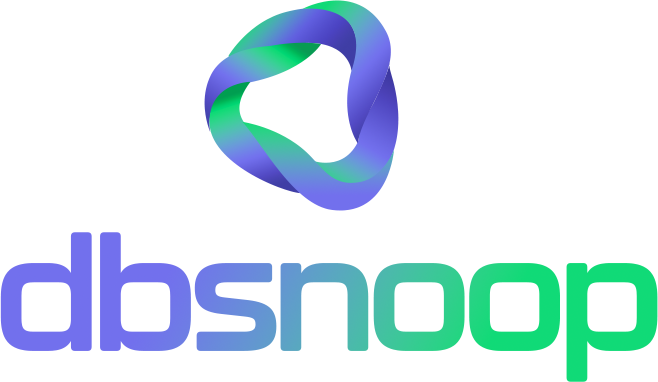

The DBA, or Database Administrator, has always been the front line, the guardian of data performance, security, and integrity. For decades, the role was defined by reactive and operational tasks: troubleshooting slow queries, managing backups, manually tuning indexes, and constantly monitoring locks. In a world where the cloud and Artificial Intelligence (AI) are automating processes that once required human intervention, the question arises: are the days of the DBA numbered?
The answer is no. The role will not end, but it will evolve profoundly. Just as the auto mechanic transformed into a specialist in electronic systems diagnostics, the DBA is being freed from manual labor to become a data architect and strategist. Automation is not a threat, but a catalyst that elevates the DBA to a position of greater value. This article explores this transformation, highlighting how AI and observability platforms, like dbsnOOp, are the tools that enable this new era.
The End of the Reactive DBA: From Operator to Strategist
The traditional DBA spent much of their time “fighting fires.” It was an endless cycle of reactivity: a high CPU alarm, a slow query reported by a developer, or a system that suddenly became overloaded. Monitoring tools existed, but they often provided only the tip of the iceberg, forcing the DBA to dive into logs and metrics to find the root cause.
The rise of the cloud accelerated this change. With elastic and managed infrastructures, many routine and infrastructure tasks were automated. And, more recently, AI has begun to take over reactive troubleshooting. Automation handles:
- Proactive and Predictive Monitoring: AI doesn’t wait for a problem to happen; it learns the database’s normal behavior and detects anomalies in real-time, predicting potential failures.
- Root Cause Diagnosis: Platforms like dbsnOOp don’t just alert about a problem but correlate telemetry data to identify the exact cause, such as a performance regression in a specific query or an excessive lock.
- Optimization and Code Generation: AI can rewrite inefficient queries, suggest new indexes, and generate optimized SQL commands, eliminating the need for manual analysis and refactoring.
- Resource Management: Automation takes care of cloud resource allocation and scalability, ensuring the database has the necessary capacity without the DBA needing to intervene.
With AI taking on the role of the “on-call doctor,” the DBA is freed to take on a more strategic role.

The Rise of the Strategic DBA: The Specialist’s New Role
The future of the DBA is no less important, but more complex and of greater value to the business. With operational tasks automated, the DBA of the future focuses on four main pillars:
1. Data and Infrastructure Architect
Instead of just maintaining the infrastructure, the future DBA designs it. They will be primarily responsible for choosing the right database technologies for each use case, designing the data architecture in the cloud, planning distribution and replication to ensure high availability, and creating partitioning and storage strategies. Expertise shifts from “how to do it” to “why and which one to choose.”
2. Performance Specialist and Strategic Optimization
The DBA won’t be limited to reactively optimizing queries. They will use AI insights and suggestions to optimize the database at a deeper, more strategic level. This includes schema analysis, reviewing data models to ensure long-term scalability, and implementing data management policies that prevent problems like excessive table growth. Automation is a copilot, not a substitute.
3. Guardian of Security and Compliance
With the growing volume of sensitive data, security becomes an absolute priority. The DBA will be responsible for ensuring that access policies are correct, that data is anonymized or encrypted where necessary, and that the company is in full compliance with regulations like GDPR. AI can help identify sensitive fields and alert about access anomalies, but the security strategy is a human responsibility.
4. Cloud Cost Optimizer
In the cloud, every inefficient query translates into money. The DBA will become a key partner in cost optimization, analyzing AI suggestions to optimize database and storage resource usage. They will have the global vision to identify where the company is spending the most and propose solutions that balance performance and expenditure, generating direct value for the business.
dbsnOOp: The Catalyst for Change
The transition to the strategic DBA is not something that happens overnight. It requires tools that automate the operational and provide the necessary intelligence for the strategic. dbsnOOp was built precisely for this new era.
Instead of manually monitoring and diagnosing, the DBA can use dbsnOOp as an intelligent control panel. The platform delivers the diagnosis and the ready-made solution, freeing the DBA to focus on design, security, and costs. dbsnOOp’s AI becomes the right-hand, handling granular monitoring and reactive troubleshooting, while the DBA uses this intelligence to make strategic decisions that drive the company’s growth and efficiency.
The future of the DBA is brighter than ever. It’s not the end of the role, but the beginning of a new phase, where the database professional becomes one of the most important pillars of strategy and innovation.
Want to transform your DBA routine and prepare for the future? Schedule a meeting with our specialist or watch a practical demonstration!
Schedule a demo here.
Learn more about dbsnOOp!
Learn about database monitoring with advanced tools here.
Visit our YouTube channel to learn about the platform and watch tutorials.


